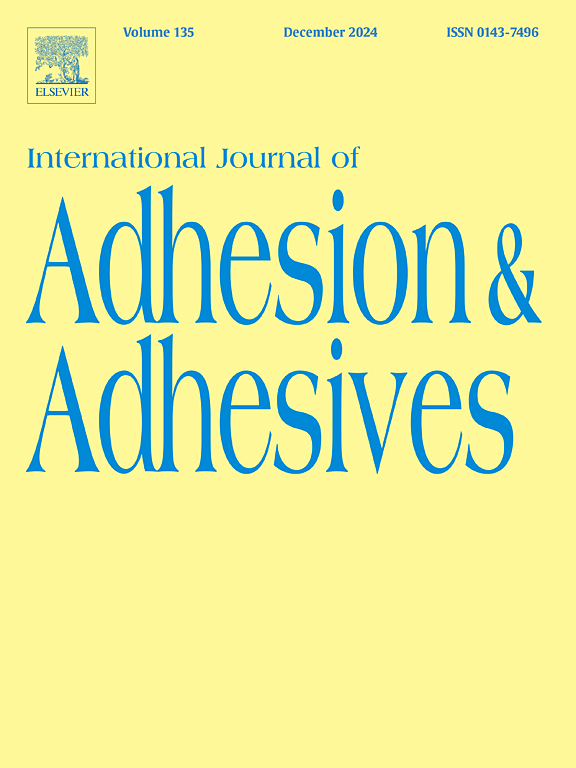影响EVA薄膜剥离强度的因素综合分析
IF 3.5
3区 材料科学
Q2 ENGINEERING, CHEMICAL
International Journal of Adhesion and Adhesives
Pub Date : 2025-10-01
DOI:10.1016/j.ijadhadh.2025.104172
引用次数: 0
摘要
乙烯-醋酸乙烯共聚物(EVA)可作为CIGS柔性薄膜太阳能组件制造过程中的核心粘合剂。为了评估EVA的粘合性能,剥离强度通常采用剥离试验来测量。但剥离强度试验结果受剥离试验系统各参数的影响,必须对试验运行条件进行充分描述和适当分析,才能正确评价试验结果。我们对以EVA为粘合剂的复合膜层进行剥离试验,考虑剥离角度、剥离速率、剥离试样宽度对剥离力的影响。试验结果表明,在相同的试验条件下,剥离力的比值近似等于剥离试件宽度的比值。剥离率主要通过影响EVA在剥离过程中的粘弹性响应来影响剥离强度,从而导致失效模式的改变。不同的剥离角度导致获得相同界面韧性所需的剥离力不同,因为在较小的角度下,拉应力分量占主导地位,而在较大的角度下,剪切应力分量占主导地位。本文章由计算机程序翻译,如有差异,请以英文原文为准。
Comprehensive analysis of factors influencing the peel strength of EVA film
Ethylene-vinyl acetate copolymer (EVA) can be used as a core adhesive in the manufacturing process of CIGS flexible thin film solar modules. To assess the adhesion properties of EVA, peel strength is often measured using a peel test. However, the peel strength test results are affected by various parameters of the peel test system, so the conditions under which the experiment was run must be fully described and properly analyzed to correctly assess the test results. We conducted a peel test of a composite film layer with EVA as the adhesive, considering the effects of peel angle, peel rate, and peel specimen width on the peel force. The experimental results indicate that under the same test conditions, the ratio of peel forces is approximately equal to the ratio of the widths of the peel specimens. The peel rate primarily affects the peel strength by influencing the viscoelastic response of EVA during the peel process, leading to a change in failure mode. Different peel angles result in different peel forces required to achieve the same interfacial toughness because the tensile stress component dominates at smaller angles, while the shear stress component dominates at larger angles.
求助全文
通过发布文献求助,成功后即可免费获取论文全文。
去求助
来源期刊

International Journal of Adhesion and Adhesives
工程技术-材料科学:综合
CiteScore
6.90
自引率
8.80%
发文量
200
审稿时长
8.3 months
期刊介绍:
The International Journal of Adhesion and Adhesives draws together the many aspects of the science and technology of adhesive materials, from fundamental research and development work to industrial applications. Subject areas covered include: interfacial interactions, surface chemistry, methods of testing, accumulation of test data on physical and mechanical properties, environmental effects, new adhesive materials, sealants, design of bonded joints, and manufacturing technology.
 求助内容:
求助内容: 应助结果提醒方式:
应助结果提醒方式:


